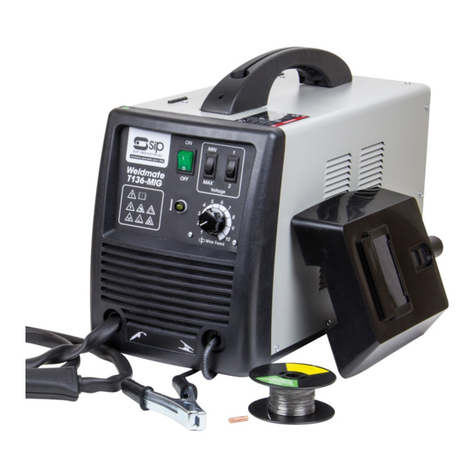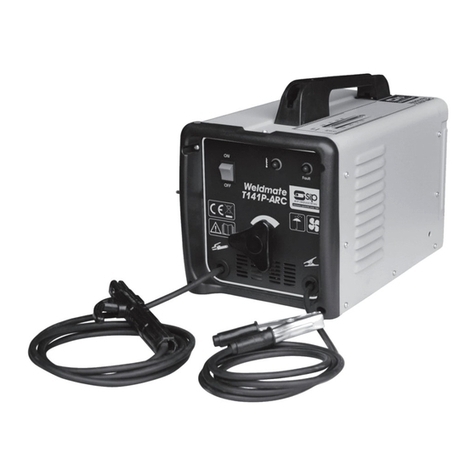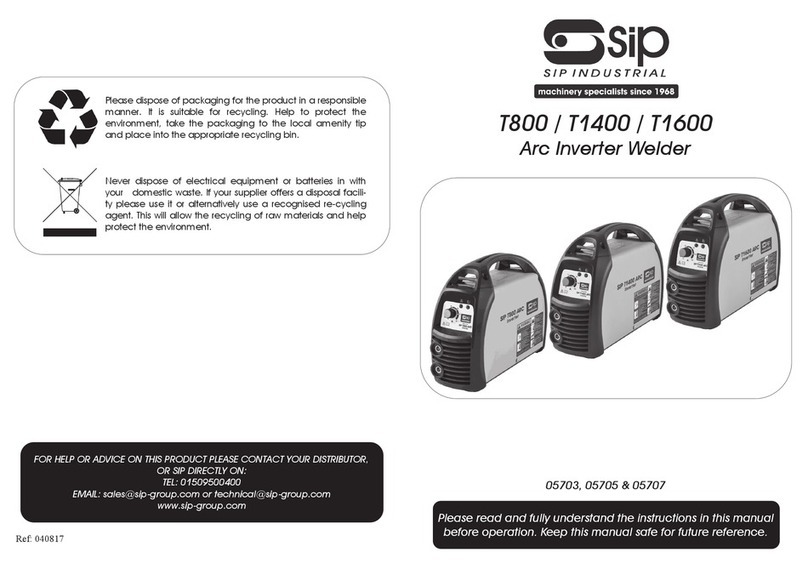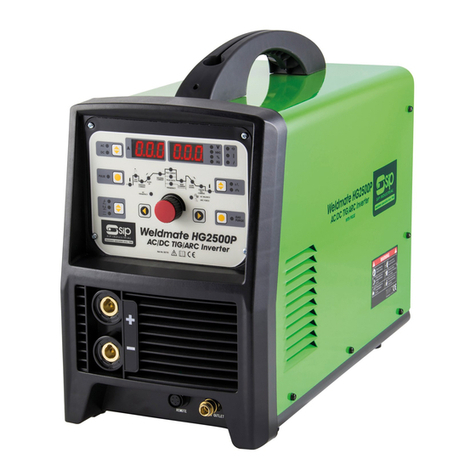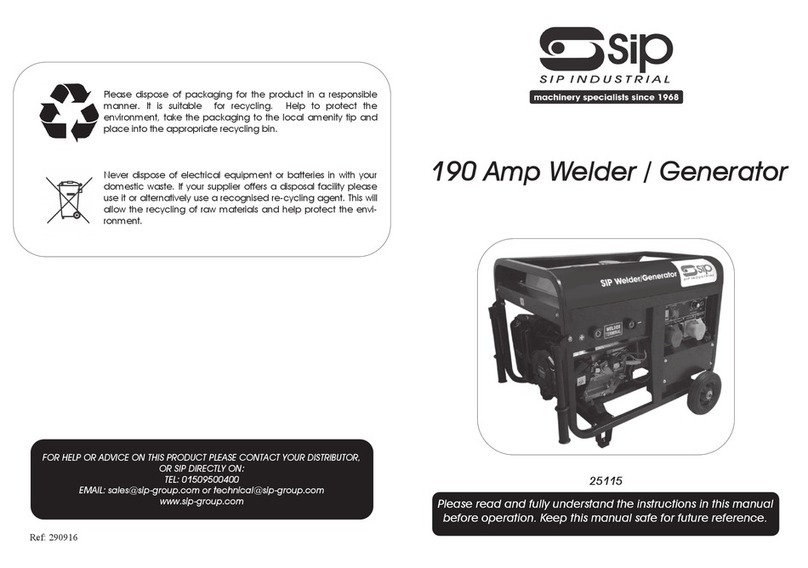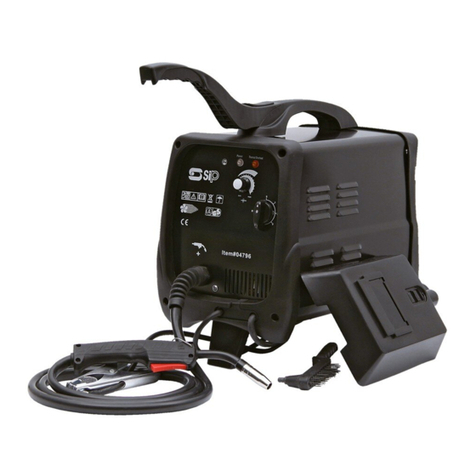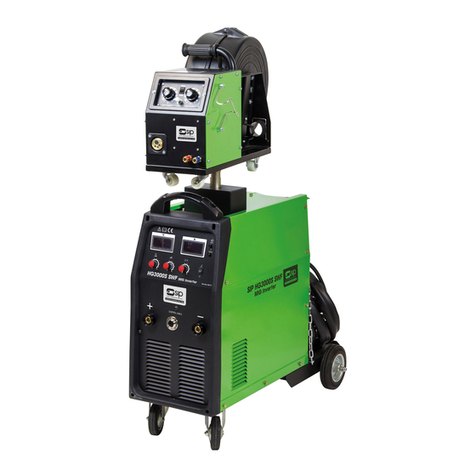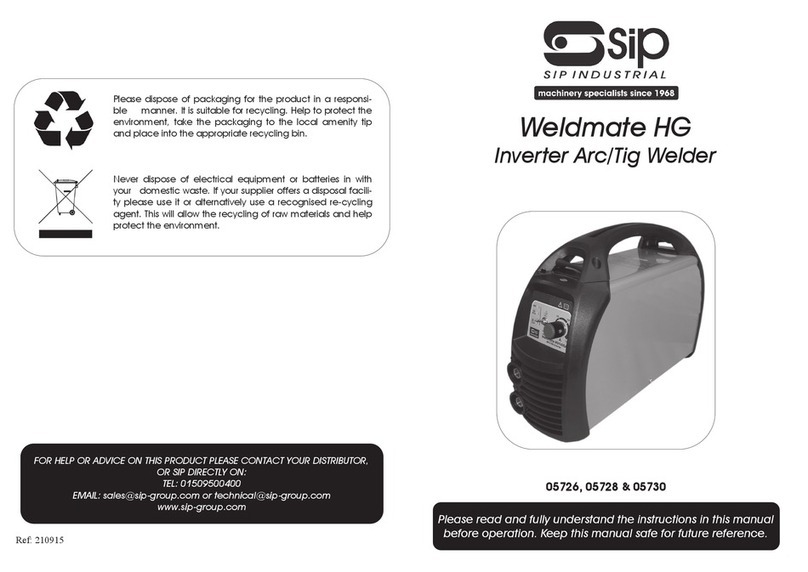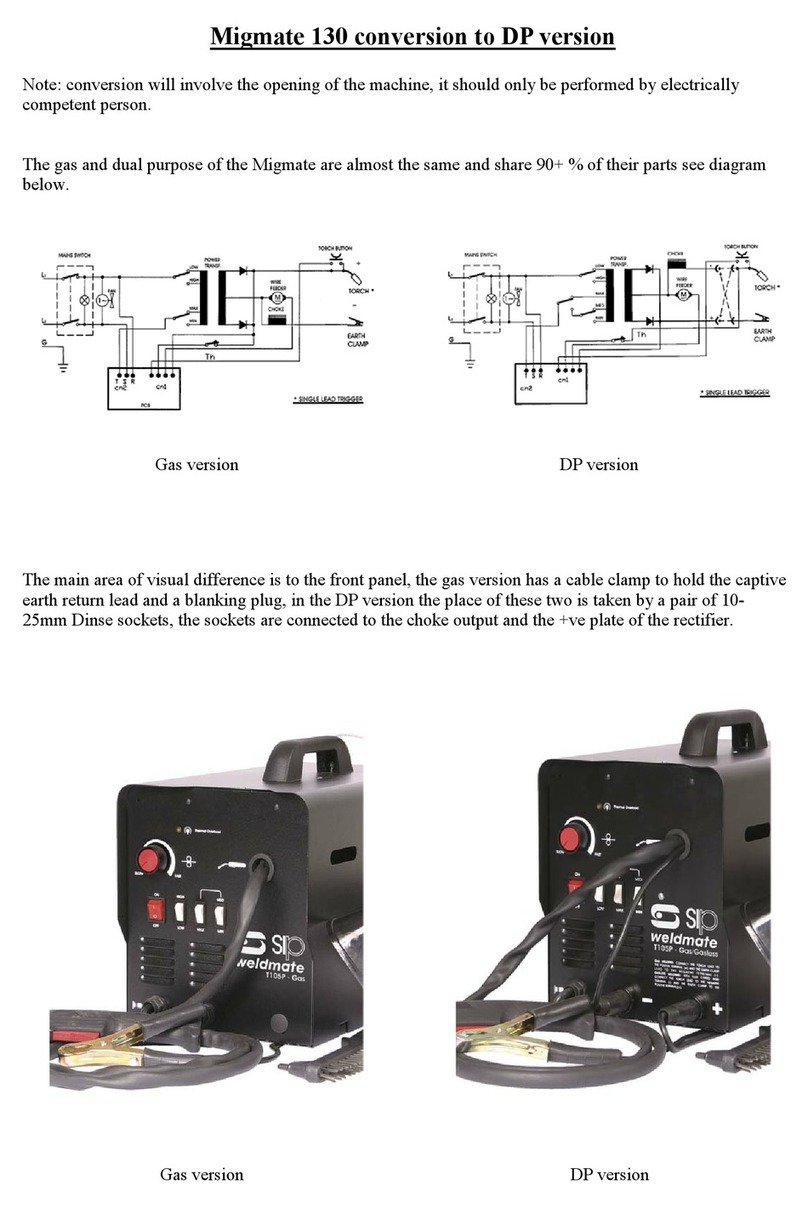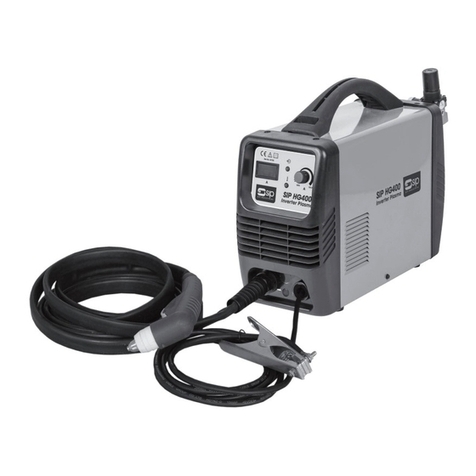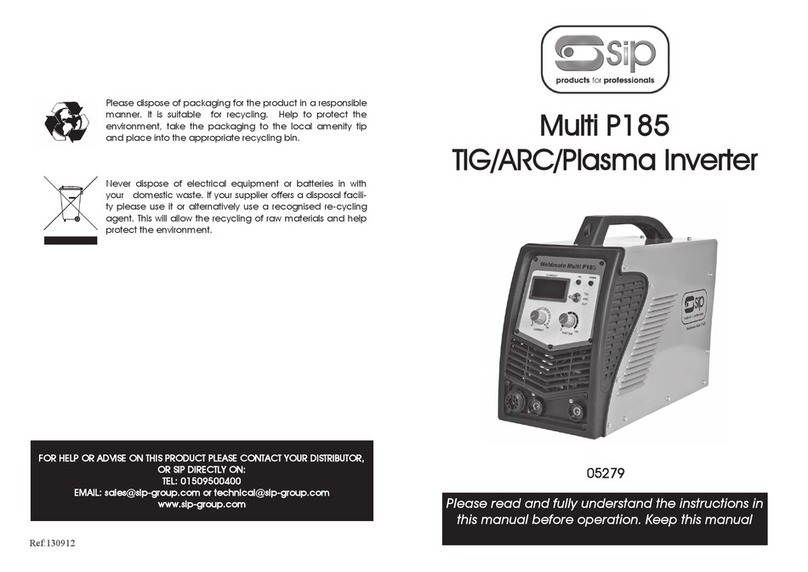5
SAFETY INSTRUCTIONS….cont
work area. Do not use in environments with a potentially explosive atmosphere.
KEEP CHILDREN AND UNTRAINED PERSONNEL AWAY FROM THE WORK AREA:
All visi-
tors should be kept at a safe distance from the work area.
STORE THE WELDER SAFELY WHEN NOT IN USE:
The welder should be stored in a dry
location and disconnected from the mains supply, and out of the reach of children.
USE SAFETY CLOTHING / EQUIPMENT:
Use a CE approved welding mask at all times
with the correct shade of filter lens. A fume extractor should be used particularly where
there is little or no ventilation.
PROTECT YOURSELF FROM ELECTRIC SHOCK:
When working with the welder, avoid
contact with any earthed items (e.g. pipes, radiators, hobs and refrigerators, etc.). It is
advisable wherever possible to use an RCD (residual current device) at the mains sock-
et.
STAY ALERT:
Always watch what you are doing and use common sense. Do not operate
the welder when you are tired or under the influence of alcohol or drugs.
DISCONNECT THE WELDER FROM THE MAINS SUPPLY:
When not in use and before
servicing.
AVOID UNINTENTIONAL STRIKING:
Make sure the switch is in the
OFF
position before
connecting the welder to the mains supply.
NEVER LEAVE THE WELDER CONNECTED WHILST UNATTENDED:
Turn the welder off
and disconnect it from the mains supply between jobs. Do not leave the welder con-
nected to the mains supply if no more welding is to be done.
DO NOT ABUSE THE MAINS LEAD:
Never attempt to move the welder by the mains
lead or pull it to remove the plug from the mains socket. Keep the mains lead away
from heat, oil and sharp edges. If the mains lead is damaged, it must be replaced by the
manufacturer or its service agent or a similarly qualified person in order to avoid un-
wanted hazards.
All
extension cables must be checked at regular intervals and replaced
if damaged.
CHECK FOR DAMAGED PARTS:
Before every use of the welder, any damage found
should be carefully checked to determine that it will operate correctly, safely and per-
form its intended function. Any damaged, split or missing parts that may affect its oper-
ation should be correctly repaired or replaced by an authorised service centre unless
otherwise indicated in this instruction manual.
KEEP ALL PANELS IN PLACE:
Never operate the welder with the panels removed, this is
extremely dangerous.
MAINTAIN THE WELDER WITH CARE:
Keep the earth clamp, mig tip & shroud clean for
the best and safest performance.
USE ONLY RECOMMENDED ACCESSORIES:
Consult this user manual, your distributor or
SIP directly for recommended accessories. Follow the instructions that accompany the






